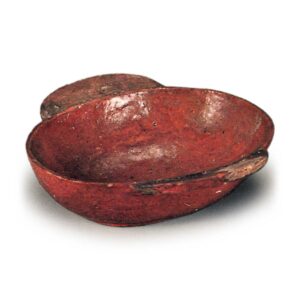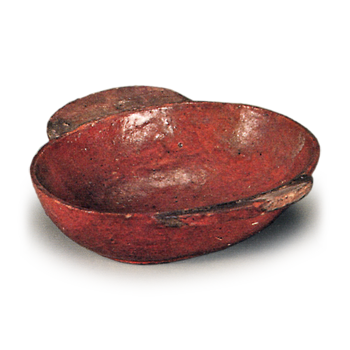
A cup with two ears. Also called “ear cup” or “feather cup. In the Han dynasty of China, the baron, which was a typical drinking vessel of the Zhou dynasty, disappeared and the cup style flourished. Considering the oval cup-shaped cup with two ears, it is difficult to say that this type of cup originated as an earthenware based on the application of a potter’s wheel. The origin of these objects is thought to have been the use of natural objects, either as they were or with some modification. The fact that Han dynasty cups are so light in comparison to the heavy wares of the Zhou and earlier periods has led many scholars to attribute their form to Western influences. The lacquer cups (from the humid Hunan region) found in many old artifacts today are the closest in nature to planer-like vessels, which are southern and warmer than the northern and colder baron-shaped vessels from the horns of animals, and at least the lacquer technique itself is southern. The cups are southern and warmer in origin, and at least the lacquer technique itself is southern in origin. The Trojan double-ear golden cup is the depas amphictyoperlon of Homer’s poem, and its form bears a striking resemblance to the Han dual-ear lacquer cups. In addition to lacquer, bronze ceramic twin-ear cups were also made in the Han Dynasty. Chinese potters made great progress during the Tang and Sung dynasties, and some of the kiln wares were copied from the Han style. However, there are few oval-shaped originals as cups with bicolored ears, and most of them are round, with a few square ones. The Yunliu Sai Sitsu (飲流斎説瓷) describes Qing dynasty porcelain cups as follows: “Kangxi porcelain cups with honey-yellow concave carvings and dark flowers in the shape of dragons with ears were made at the Kangxi kiln, and the smallest of the two ears was considered to be the most precious.



